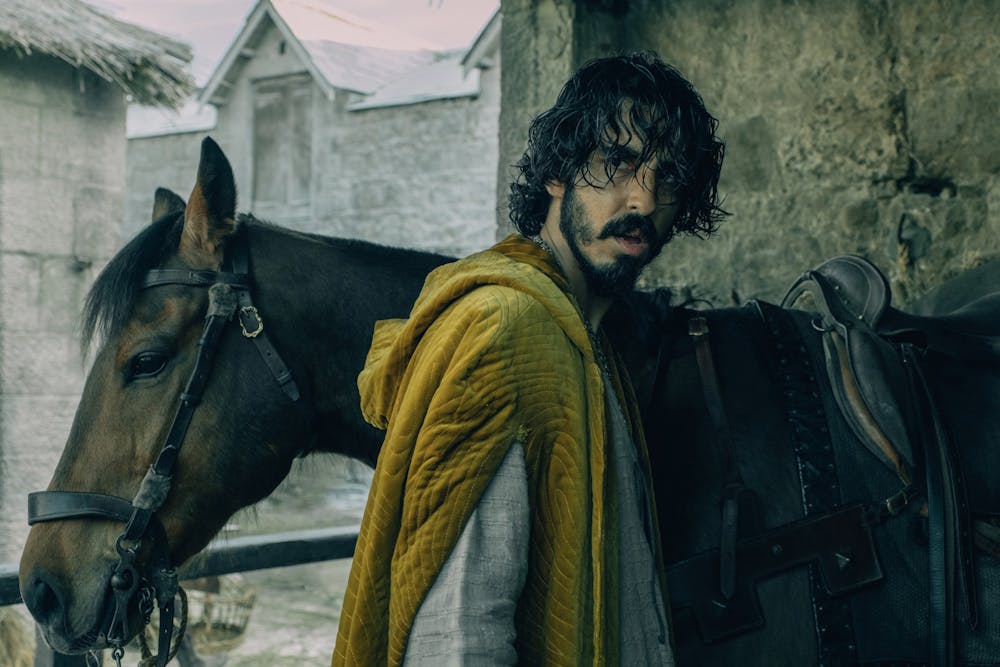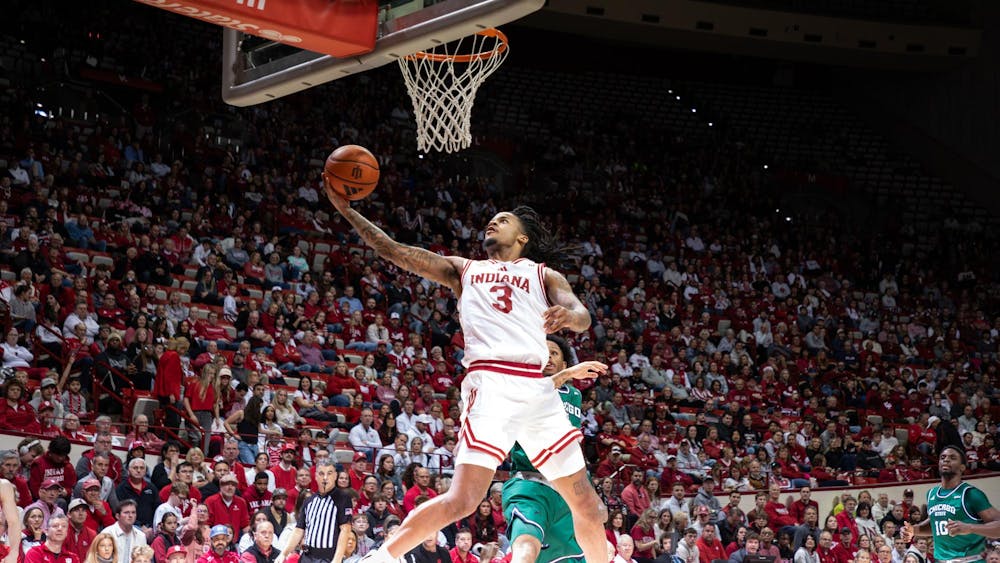Retellings of old myths in modern cinema are common, but few distinguish themself as dramatically from the others as “The Green Knight.” The film is a relentless two-hour visual and auditory journey in a bizarre and sometimes nightmarish dream landscape.
The storyline is based on the anonymously authored medieval ballad of “Sir Gawain and the Green Knight” about a duel that takes a year to resolve. This film focuses on the agitation at the dark core of this original story: a confrontation with the inevitable passage of time.
The story seeks to break down the “timelessness” of legends and the characters within them. In one scene, a character elaborates on the color green as symbolizing both rebirth and rot in the face of time.
Portraiture as a distortive process is a recurring theme. Scenes of Gawain are interspersed with a puppet show re-enacting the beheading that both starts and ends the film. A character confesses her love of “improving” the stories she transcribes.
Time lapses both forward and backward are frequent, and all scenes deliberately happen either at dusk or dawn. The progression of time is either drawn out, including an extended shot of a character just riding a horse on a road, or extremely condensed, like when a year passes in a few seconds.
The camera occasionally does complete 180-degree turns, violently adjusting what the audience can see. Lighting, hues, shadows and fog are used to an extreme, distorting the visuals to a point of surreal intensity. Bodies die, decompose and then are brought back to life. Death is as unpredictable as it is inevitable.
Nothing is as it seems, and the meticulously crafted surreal landscape of sights and sounds purposefully intensifies the audience’s bewilderment at the film’s progression. The ticking of clocks is a frequent sound effect, and the music alternates between wordless vocalizations and rhymed ballads.
In the final scene, time is once again turned on its head. Gawain sees a vision of himself in the future, leading an increasingly corrupt and isolated life. He comes back to the present, kneeling before the green knight wielding an axe, declaring, “I’m ready.” He tears off the enchanted green girdle that had been prolonging his life until now, symbolizing a violent break from the entrapment of time’s passage.
Death is an escape from the dreariness of the timelessness of stories. But we don’t see Gawain’s death – the green knight says “off with his head” and the film abruptly ends. The film opens with Gawain’s head on fire, a luminously destructive attempt to cast light onto the unknown, but ends with the audience still left in the dark as to what the fate of his head is.
The title appears on screen at the end of the film, carved defiantly into the dead trunk of a tree, sped up by a time lapse.






